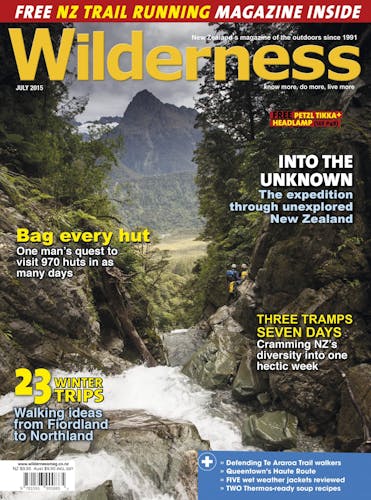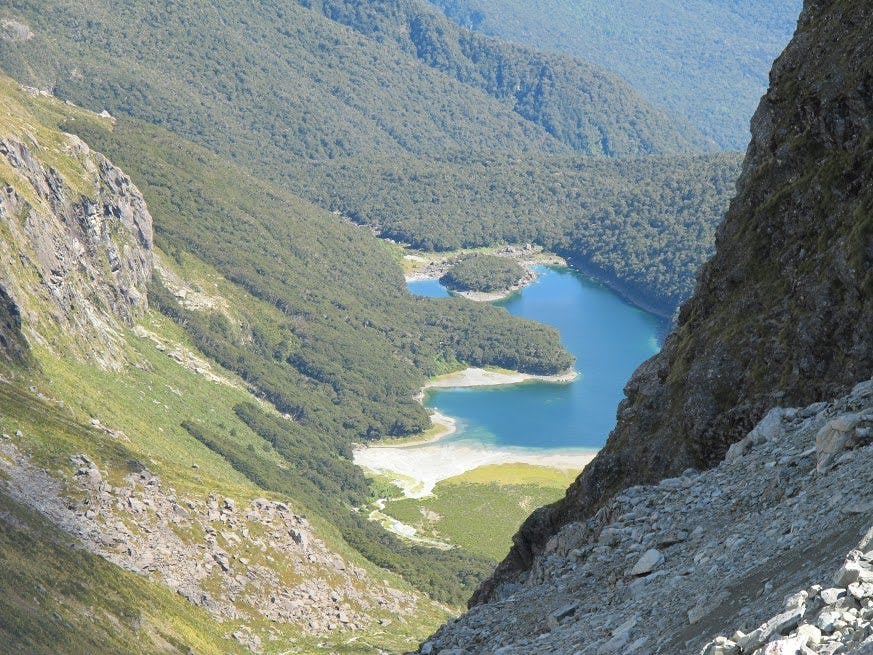After a regrettable encounter at Lake Mackenzie, Chris Munn is left wondering who causes more harm to the environment: a group of off-track trampers or DOC
Earlier this year I was in a group of nine trampers walking a figure of eight loop to Lake Nerine and Emily Pass in Mt Aspiring National Park. Most in the party were over 60 and we were all members of a long-standing and respected tramping club.
The trip was mostly off track and involved wild camping. Towards the end, we climbed from Routeburn Flats over Emily Pass and down to Lake Mackenzie, where we planned to camp. This was classic off-track tramping in rough country.
We arrived at the head of Lake Mackenzie at about 6:30pm, tired but pleased to have achieved a tough route. We set up camp and were about to eat a well-earned meal when we were interrupted by an officious DOC warden from Lake Mackenzie Hut, more than one kilometre distant at the opposite end of the lake. We were read the riot act and informed that we were in breach of several Acts of Parliament, that he had some amazing powers vested in himself to fine us, order us away from our campsite and generally lord it over us. Our crime? We had camped ‘within 500m of a side track to the Routeburn Track’. This was the first we had heard of camping restrictions on Great Walk side tracks.
We were faced with an uncompromising official who told us we had to return to a waterless Emily Pass to camp amidst almost impenetrable scrub, or walk for another two hours in the opposite direction to our intended route. We could also pay to stay at the hut (plus penalty fees for not booking in advance). After we showed him information we had gathered prior to our trip that indicated we could camp where we were, he stopped accusing us of being freeloaders and decided that he might find some room in the fully booked hut campsite.
We decamped and set up in the dark on the allocated campsites, which, although booked and paid for by others who hadn’t turned up, were now repurchased by us. The penalty fees were graciously waived.
The next day we were asked for our names so that our club could be informed of our actions. The warden then proceeded to lecture us on the threats to the natural environment that people like us caused, such that our grandchildren would be denied the opportunity to enjoy what we had just trampled over.
On and on he went.
In an ironic twist, we left Lake Mackenzie and climbed the high sidle track to the sound of a sewage pump straining away at the visually obvious DOC and commercial accommodation buildings below, accompanied in jarring harmony by the roar of a helicopter as it left the nearby commercial operation with a sling load of rubbish.
Past Harris Saddle, we encountered track upgrade work that was turning the track into a series of dreaded wooden steps, presumably to ‘enhance the track experience’.
What was that about preserving the natural environment?
But worse was to come. The area around the Routeburn Falls saddened me. Vegetation, moss and other ground cover around the monstrous accommodation structures had been destroyed by previous visitors. It angered me that our party of experienced trampers were treated as environmental vandals when we inadvertently broke some ill-defined rules and boundaries while multitudes of visitors, who seem to care little for the damage done in their rush to enjoy the natural beauty of the area, are given uncontrolled access.
Consider this: if you are traversing untracked country and your prior research, including on DOC’s website, did not reveal any areas where camping was prohibited, define the 500m rule, or spell out the seemingly arbitrary requirement to camp invisibly, who is remiss?
Further research after this experience has not helped. No maps show the magical 500m boundaries, or mention associated tracks as being included in this restriction.
Booking campsites on rugged backcountry trips is not an option due to the uncertainty of travel times and the impact of bad weather. DOC’s no refund policy for people arriving out of date makes this impossible, even if we wanted it.
DOC’s unwillingness to accommodate traditional trampers in this area has effectively quarantined us from a large swathe of a national park in the interests of, mostly, comfort-seeking tourists.
Reflecting on our experience, I think the real problem is chronic overuse of this part of Mt Aspiring National Park. Excessive numbers of people are being funnelled into an area that cannot cope. DOC’s ill-thought strategy to ramp up track usage and, presumably, revenue from hut and camping fees, together with concessionaire fees from commercial operations, is wrecking the area’s real appeal: its isolation and rugged beauty.
At the same time, those wanting to do some low-impact, off-track tramping are being excluded.
Who are the real vandals here?






